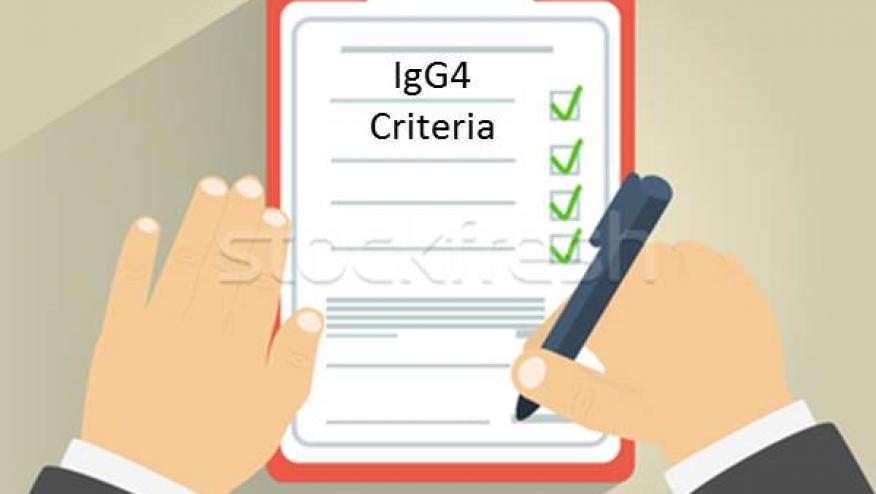IgG4-Related Disease: First Draft Criteria Presented at ACR 2018 Save

As Dr. John Stone, MD, MPH recounted in his presentation regarding the new ACR/EULAR Classification Criteria for IgG4-Related Disease (IgG4-RD), only 15 years prior, IgG4-related disease was an unknown entity in the medical community.
However since its discovery in Japan, clinical characteristics continue to be defined for this enigmatic disease that can involve multiple organ systems. Perhaps one of the most important aspects of this disease is the fact that an elevated serum IgG4 level is not alone diagnostic of this disease; knowledge of this and specific clinical characteristics are what heralded the drafting of these classification criteria.
The draft criteria were presented following the collaboration of researchers and clinicians from 5 continents and are the first criteria proposed for this condition. As they are still in draft status, we will not reproduce them here in their entirety but indicate the domains in which they cover.
The primary entry criterion indicates that characteristic clinical or radiological involvement of a typical organ be present. These include the pancreas, salivary glands, bile ducts, orbits, lacrimal glands, kidney, lung, aorta, retroperitoneum, pachymeninges, and thyroid gland; all organs known to be affected in IgG4-RD.
Exclusion criteria: represent clinical characteristics such as presence of fever or lack of response to glucocorticoids. Serological criteria are vast, but most importantly indicate that the presence of ANCA positivity or anti-SSA/RO or anti-SSB/La is virtually entirely exclusive of the disease. Radiologic findings should not indicate evidence of rapidly progressive disease, malignancy, or infection. Pathologic features of malignancy, necrotizing vasculitis, prominent necrosis, or granulomas are exclusive. Finally a diagnosis of Multicentric Castelman’s Disease, Crohn’s Disease or Ulcerative colitis (if only hepatopancreatoiliary disease present), or Hashimoto’s thyroiditis (if only thyroid involved) should not be present.
Inclusion criteria: encompass histopathology of primarily lymphoplasmacytic infiltrate with possible obliterative phlebitis and storiform fibrosis. Immunostaining criteria are present, as well as weighted criteria for levels of serum IgG4 concentrations. Finally, inclusion criteria specifically include weighted components for the involvement of the following organs: bilateral lacrimal, parotid, sublingual, and submandibular glands; chest and thoracic aorta; pancreas and biliary tree; kidney; and retroperitoneum.
A 19 point threshold is required to have patients meet the classification criteria. While the draft criteria are multifaceted and are the first ACR criteria to have such an extensive set of exclusions, the criteria were designed with the result of increasing the sensitivity and specificity for entering patients into clinical trials to rates of 85.5% and 99.2%, respectively.
While revisions may occur, we can expect to see a similar set of criteria set forth in the final draft, and while it is important to remember that these are not diagnostic criteria, these can help identify patients who may need further evaluation, treatment, and potential enrollment in a clinical trial.










If you are a health practitioner, you may Login/Register to comment.
Due to the nature of these comment forums, only health practitioners are allowed to comment at this time.